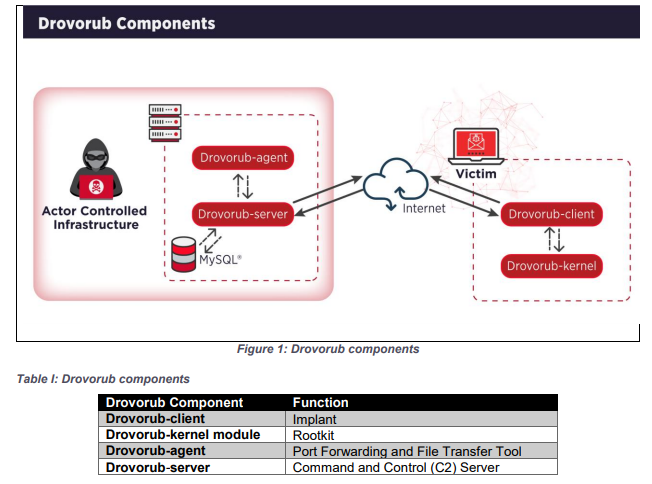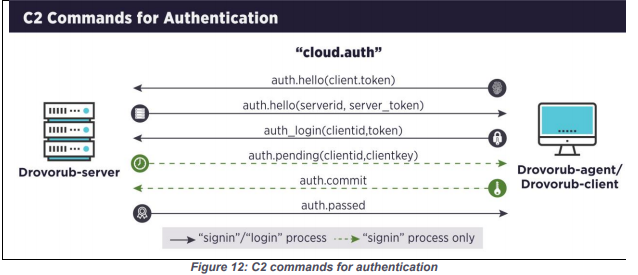- WHY AVERTIUM?
-
-
Why Avertium?
Context over chaos. Disconnected technologies, siloed data, and reactive processes can only get you so far. Protecting businesses in today’s threat landscape demands more than a set of security tools – it requires context.
That's where Avertium comes in
-
Considering Microsoft?
Avertium Named Microsoft Security Solutions PartnerAvertium’s managed services for Microsoft Security Solutions is delivered through the company’s premium service: Fusion MXDR. Fusion MXDR includes 24x7 monitoring and management of Defender for Endpoint and Sentinel, threat intelligence, attack surface
monitoring, and vulnerability management for Microsoft Security customers. -
Latest Avertium News
How Gartner's 2024 Cybersecurity Trends Can Guide Your Cyber EffortsGartner has identified its six top cybersecurity trends for the year, and they’re ones that healthcare leaders should consider. Of the six trends, here are the ones that Avertium finds most instructive and beneficial.
-
-
- SOLUTIONS
-
-
Governance, Risk, + Compliance
GRC with context – not complexity. -
Attack Surface Management
No more blind spots, weak links, or fire drills. -
Threat Detection + Response
Detect, adapt, and attack with context. -
Microsoft Security Solutions
End-to-end support from strategy to daily operations to maximize your Microsoft Security.
-
-
- COMPANY
-
-
About Us
Security. It’s in our DNA. It’s elemental, foundational. Something that an always-on, everything’s-IoT-connected world depends on.
Helping mid-to-enterprise organizations protect assets and manage risk is our only business. Our mission is to make our customers’ world a safer place so that they may thrive in an always-on, connected world.
-
Latest Avertium News
How Gartner's 2024 Cybersecurity Trends Can Guide Your Cyber EffortsGartner has identified its six top cybersecurity trends for the year, and they’re ones that healthcare leaders should consider. Of the six trends, here are the ones that Avertium finds most instructive and beneficial.
-
-
- PARTNERS
-
-
Our Partners
Best-in-class technology from our partners... backed by service excellence from Avertium.
-
Partner Opportunity Registration
Interested in becoming a partner?
With Avertium's deal registration, partners can efficiently and confidently connect with Avertium on opportunities to protect your deals.
-
Latest Avertium Resource
Harnessing Copilot for Security: A Strategic Approach to Healthcare Cyber DefenseMicrosoft Copilot for Security analyzes and synthesizes high volumes of security data which can help healthcare cybersecurity teams do more with less.
-
-
- NEWS & RESOURCES
-
-
News & Resources
Dive into our resource hub and explore top
cybersecurity topics along with what we do
and what we can do for you. -
Latest Resource
Harnessing Copilot for Security: A Strategic Approach to Healthcare Cyber DefenseMicrosoft Copilot for Security analyzes and synthesizes high volumes of security data which can help healthcare cybersecurity teams do more with less.
-
-
- CONTACT
Russian Drovorub malware affects Linux Systems
Drovorub Malware Overview
This threat report is about the Drovorub malware, which has been attributed to the Russian military unit known as the GRU (Organization of the Main Intelligence Administration).
The malware affects Linux systems and utilizes a unique method of persistence within an infected host. The malware is a part of the intelligence operations of APT28 (Advanced Persistent Threat).
Drovorub Tactics, Techniques, and Procedures
Drovorub malware operates as an installable agent on Linux hosts, performing a variety of reconnaissance operations on the network. The malware operates as a rootkit in conjunction with a toolset allowing for the ability to remain undetected. The client communicates with the command and control (C&C) server running a different version of the Drovorub software package.
Related Reading: Netwalker Ransomware Offered as Ransomware-as-a-Service Creating Increased Prevalence
Malware Components

Deploys Previously
Undisclosed Drovorub Malware
The Drovorub server maintains a mysql database of all the installed agents in the wild. The database manages the requests sent by the individual agents and handles the tasking process. The server authenticates each agent before issuing commands to the Drovorub agent.
The Drovorub client receives instructions from the server and starts the execution of those commands. The client can transfer files from the affected host or retrieve files from the command and control server. The agent can also port forward network traffic to hide its presence. It can open a remote shell for the bad actor as needed.
The client is packaged with a callback URL for the Drovorub server, a username/password for authenticating with the server, and an RSA public key for facilitating the authentication process with the server.
The kernel module is the rootkit element of this malware campaign. It hides the Drovorub malware’s activities from the administrator by not making the operations viewable to the userspace. It hides all the file manipulation and the network sessions created by the Drovorub malware. All the communication between the various components is done by JSON over WebSockets.
Authentication Model

Deploys Previously
Undisclosed Drovorub Malware
Related Reading: SIGRed “Wormable” DNS Server Vulnerability is Critical to Address
How Drovorub Affects You
- May lead to the loss of critical information and corporate secrets.
- May provide a foothold for a nation-state-level threat actor to perform reconnaissance operations on the network.
- May lead to the propagation of the malware on the affected asset.
What You Can Do about Drovorub
We recommend you perform the following actions on your critical assets running the Linux operating system:
- Limit the use of root account on the system.
- Use kernel protection tools like SELinux.
- Consider utilizing AppArmor to restrict the operations of the programs running on the system.
- Consider updating your Linux kernel to version 3.7 or later. This prevents unsigned kernel modules from loading on the system.
- Build Linux systems on hardware that supports and uses UEFI on x86-64 systems. Set your UEFI settings to either thorough or full mode.
- Install and scan your systems using either Rkhunter or Chrootkit.
- Harden your sysctl.conf file using the guide linked below.
Sources and Helpful Information
Source
MITRE Mapping(s)
- https://attack.mitre.org/techniques/T1090/
- https://attack.mitre.org/techniques/T1547/006/
- https://attack.mitre.org/techniques/T1544/
- https://attack.mitre.org/techniques/T1059/
Other Useful Information
- https://www.mcafee.com/blogs/other-blogs/mcafee-labs/on-drovorub-linux-kernel-security-best-practices/
- https://www.bleepingcomputer.com/news/security/nsa-discloses-new-russian-made-drovorub-malware-targeting-linux/
- https://otx.alienvault.com/pulse/5f3581cc4138be1d82c183b8
- Sysctl. conf hardening: https://www.cyberciti.biz/faq/linux-kernel-etcsysctl-conf-security-hardening/
Note: The Avertium Threat Report analyzes one current threat that has been shared by threat intelligence networks across the globe. Used internally by the Avertium CyberOps Team, this report will outline a “top-of-mind” threat and how it ought to be addressed accordingly.
This informed analysis is based on the latest data available.
Contact us for more information about Avertium’s managed security service capabilities.

Deciding between running an in-house SOC vs. using managed security services (MSS) to add more rigor, more relevance, and more responsiveness to your cybersecurity program? Compare the two options. Download the e-book!